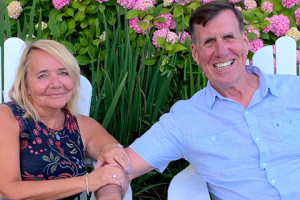
Hello, old friend. I’m writing today to say thanks, and to say farewell. This will be my last column.

A contractor friend decided to take on a part-time job teaching at a local technical school. He had never done this before.
“Teaching is hard,” I said. “You sure you want to do this?”
“I do.”
“Why?”
“I’m not sure,” he said. “It’s just a feeling I got.”
“Okay,” I said, “But if you’re going to do it, do it right. You owe that to the students.”
“I know my trade,” he said.
“I know you do,” I said, “Better than most, but teaching is a trade all its own.”
“I’ll give it a shot,” he said.
He’s been at it for more than a year now and I think he’s learned as much from his students as they have from him. He wrote recently to say, “I’ve learned that teaching is a great way to give back to the industry and community. I think I sensed that in the beginning, but I didn't realize how instrumental it would be in keeping me sharp. All the questions I have to answer two nights a week make me realize how much I still have to learn. Those questions send me on a hunt for answers each week. I’m learning not only how to answer, but where to find the answers. It's a wonderful challenge.”
I think he’s going to be fine, and he got me thinking about what I learned as a teacher when I was coming up. I began in the early-‘80s when I was working for a manufacturers’ representative. I spoke to a lot of small groups, usually a half-dozen technicians at a time, and often off the back of a pickup’s tailgate in a crowded garage. I still cringe at the memory of the night my audience pelted me with pizza crusts. That was just before they walked out. That was the night I realized that teaching is tougher than it seems.
I eventually got better at it. Forty-five years after dodging the pizza crusts, and having spoken to more than 200,000 people in places that stretched, from Hawaii to Paris and from Alaska to the Caribbean, I retired. I did have fun along the way, and I sure did learn a lot.
Consider, for instance, the alphas and the betas. Some people are born to be in charge. Those are the alphas. The betas are the ones who are happy to just follow. Most shops have this mix of people, and in every case I ever saw, the alpha guys don’t want to look bad in front of the beta guys when it came to taking a class. It’s a status thing. I would leave, but they had to stay.
The companies that hired me would toss us all in a conference room and I would learn within a few minutes who were the alphas and who were the betas in any group. It showed by the way they walked in, where they sat, how they treated each other, and who was talking the loudest. The alphas didn’t want the betas to think that this guy that the boss hired to teach them knew more than they did. That’s just human nature and I knew I wasn’t going to get anywhere with any of them until I won over the alpha guys.
So I tricked them.
It was a simple trick. I’d put up an image on the white screen of a large, black dot. And then I’d look at them and say, “What do you see?” They’d all look at the screen and they betas would say nothing. They waited for the alphas to answer. They didn’t want to get it wrong.
I’d wait.
“What do you see?” I’d ask again.
Finally, one of the alphas would say. “A dot. What’s your point?” He’d turn to those around him and smirk. They’d all laugh. I’d laugh, too.
I’d point to a beta guy. “How about you? What do you see?”
He’d shrug his shoulders. “I don’t know,” he’d say.
“How about you?” I’d ask, going around the room.
Everyone would eventually say they saw a dot.
And then I’d ask the big question: “What did I ask you?”
The alpha would say, “You asked us what do we see. It’s a friggin’ dot! Or maybe it’s a hole. Lots of holes around here. All different kinds of holes.” He’s smirk. They’d laugh.
“Why are you looking there?” I’d ask, pointing at the dot.
“You asked us what do we see?” a beta guy would say.
“But what about the screen? Do you see that? Or the projector? This table over here? The wall? Me? How come you’re only seeing a dot?”
They’d all go very quiet.
“Because that’s what you put up,” the alpha would say.
“I put up a picture of a dot and suddenly you guys couldn’t understand what my question was. You sure are focused.”
I’d smile. They’d shake their heads and laugh.
“You know, to be an effective troubleshooter, you have to see more than just what someone points to. You have to see the big picture, not just the dot. That’s what we’re going to talk about today. Big pictures.”
I had them with that. And I didn’t have to argue with the alpha guy to get there.
There are lots of tricks like that you can use if you need to teach something. I used to travel with this foot-long length of 1/2” plastic pipe. It had a plastic ball valve in the middle of the pipe, and a threaded fitting on each end of the pipe that could hold tightly to the opening of a party balloon. I’d put one balloon on the end of the pipe and blow it up through the other end of the pipe. I’d close the ball valve and hold it up. The group would watch and wonder. They’d I’d blow up a second balloon, but only half as much as the first balloon. I’d attach that to the other end of the plastic pipe. Big balloon, little balloon, there for all to see.
“We all know that high pressure goes to low pressure, right?” I’d say, holding up the pipe. They’d nod. “Okay, so what’s going to happen when I open this ball valve?”
“The balloons will equalize,” they’d say in unison.
“You sure?” They’d all nod, positive that this would be the result. After all, high pressure goes to low pressure, right?
I’d open the valve and we’d all watch as the air in the small balloon went quickly into the big balloon. They were dumbfounded by this.
“Does this mean that high pressure doesn’t go to low pressure?” I’d say.
Silence.
“What made you think the high pressure was in the big balloon? Was it because it was bigger? Does bigger mean higher pressure?”
Now there were on the edges of their seats. I had them. So I explained how a small balloon, having the molecules closer together, actually has higher pressure inside of it than big, stretched-out balloon does. I’d remind them about how they stretched the balloons at their kids’ birthday parties to make them easier to blow up. “When you pull the molecules apart, the balloon loses some of its elasticity,” I’d say. They’d nod, and then I would make my most-important point: “Sometimes, you can understand a principle like high pressure goes to low pressure, but you may not fully understand the system components. Just like these balloons. And when that happens, you can’t be an effective troubleshooter. You have to know both - physics and system components. That’s what I’m going to teach you today.”
I had them.
I learned more and more of those first-thing tricks and they worked every time. And while I was teaching in all those places, it occurred to me how much teaching has to do with selling. The better I got at teaching, the more convincing I became at just about everything I had to talk about. I learned how to make complicated thing simple to understand. I learned how to create an atmosphere where learning became fun, where people wanted to hear more. I learned how to tie things they didn’t know to things they did know.
Selling really is teaching. No one is going to buy anything from you unless you can first convince them that you know what you’re talking about, and you’re able to show them how what you have to sell is going to benefit them. All great salespeople are teachers. My contractor friend who took up teaching as a part-time challenge told me it made him a better salesman. That made me smile because I knew that it would.
So maybe you should teach someone what you know. It doesn’t have to be a big class. It could be one on one. Teaching is hard. It forces you to think. But when you can teach well you can sell even better, and that will make both you and your company even stronger.
Try it.

Hello, old friend. I’m writing today to say thanks, and to say farewell. This will be my last column.

My six-year-old grandboy, Brendan, was in the vestibule of the diner when the bubblegum machine caught his attention. It was one of those spiral models that appeared in t...

Subdural posed a question on The Wall at HeatingHelp.com in the Strictly Steam section, where some of the sharpest knives in the drawer post every day. The question was a...